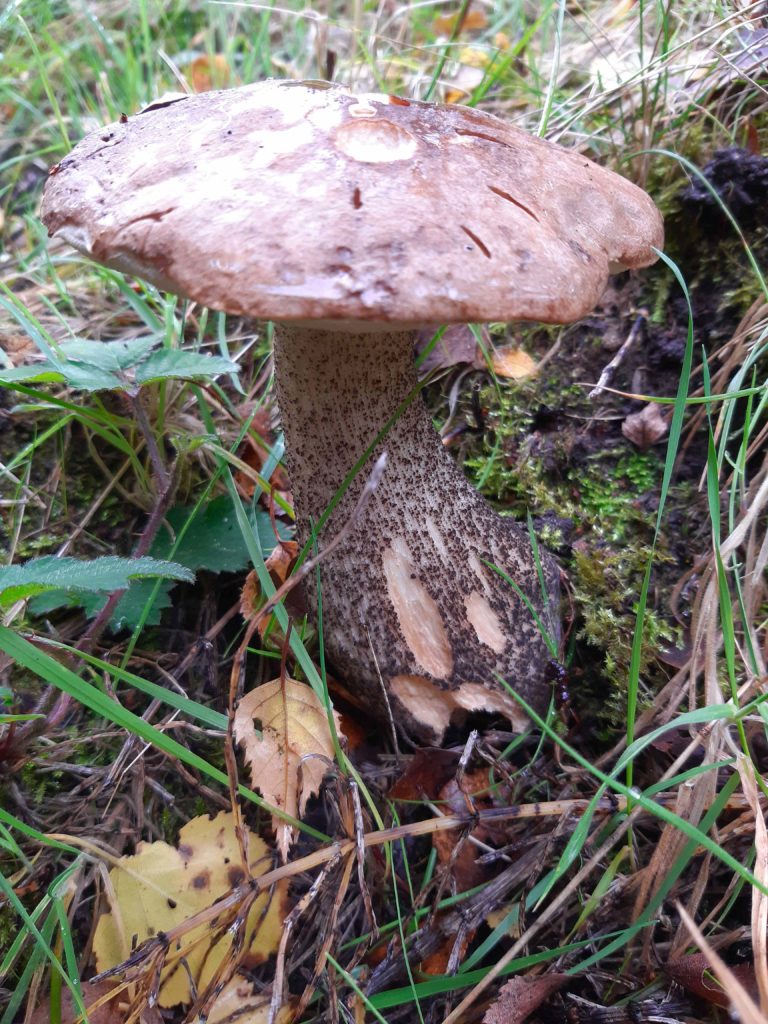
The species is edible (if found in quantity!) but not nearly as good as the Orange Birch Bolete.
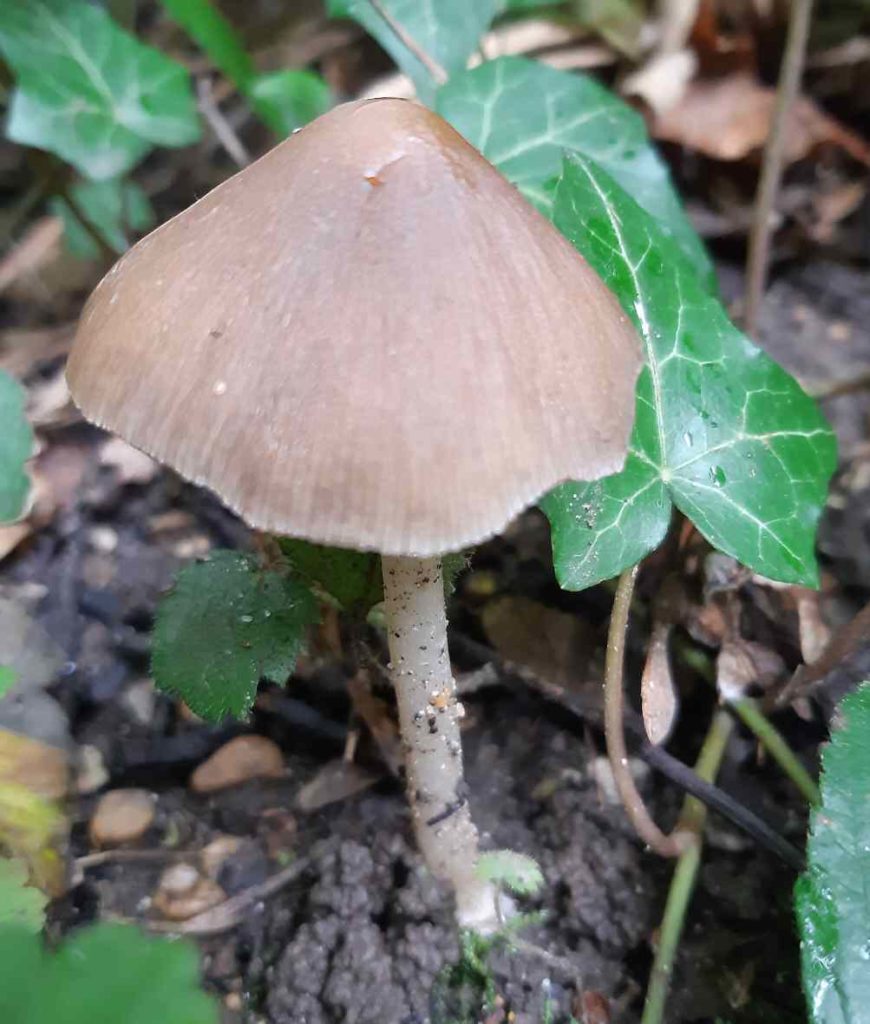
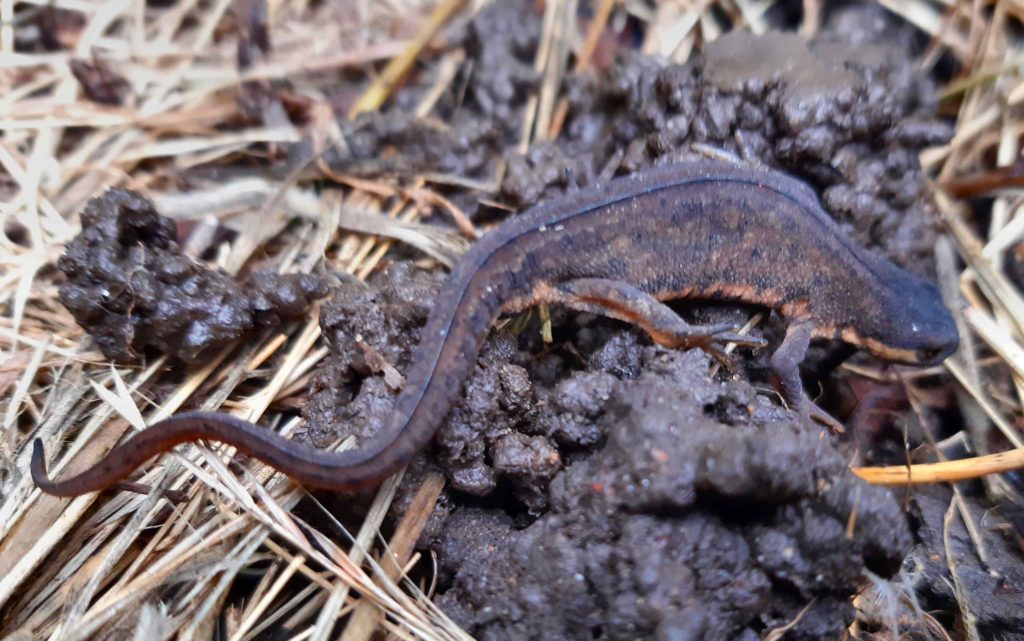
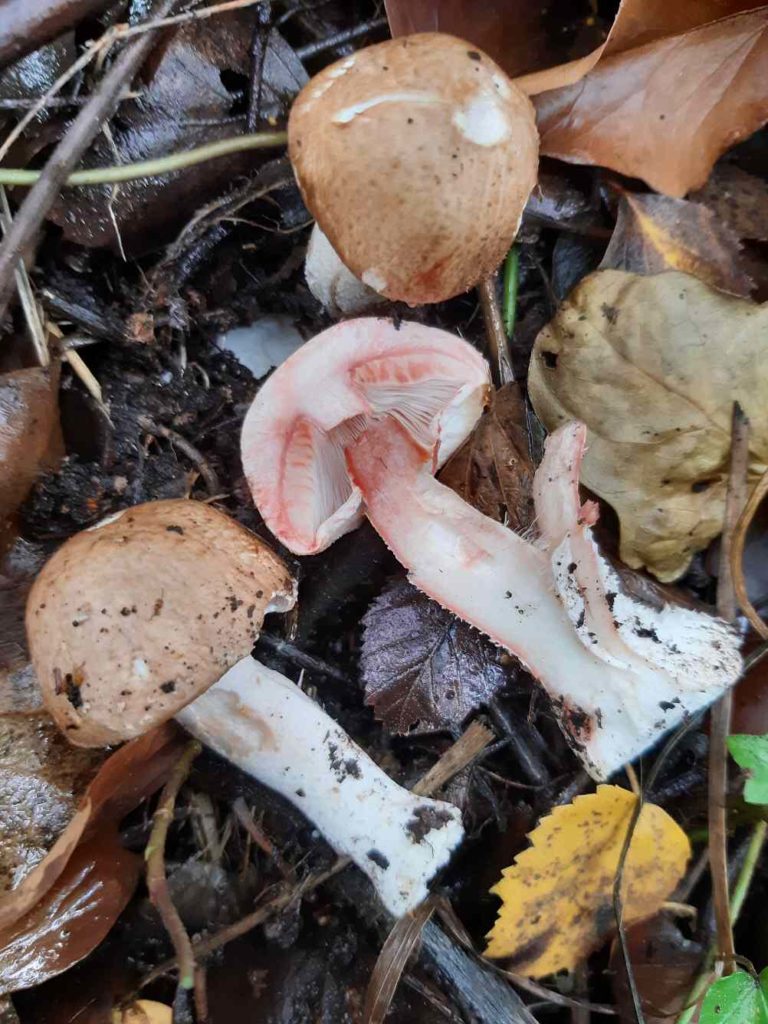
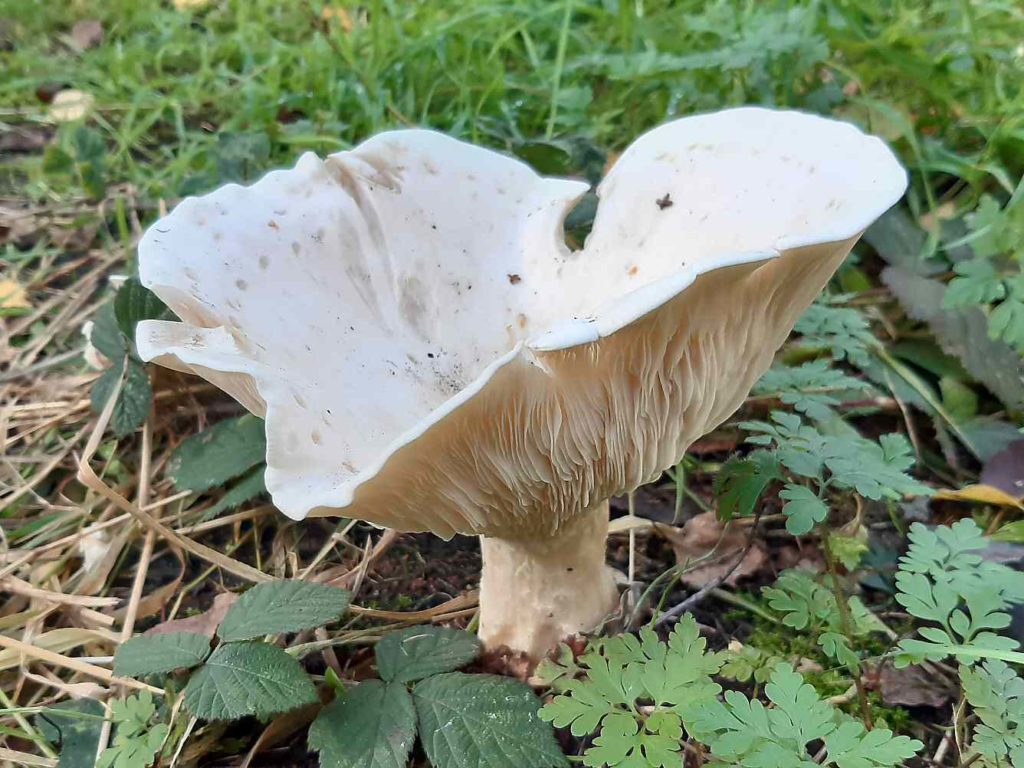
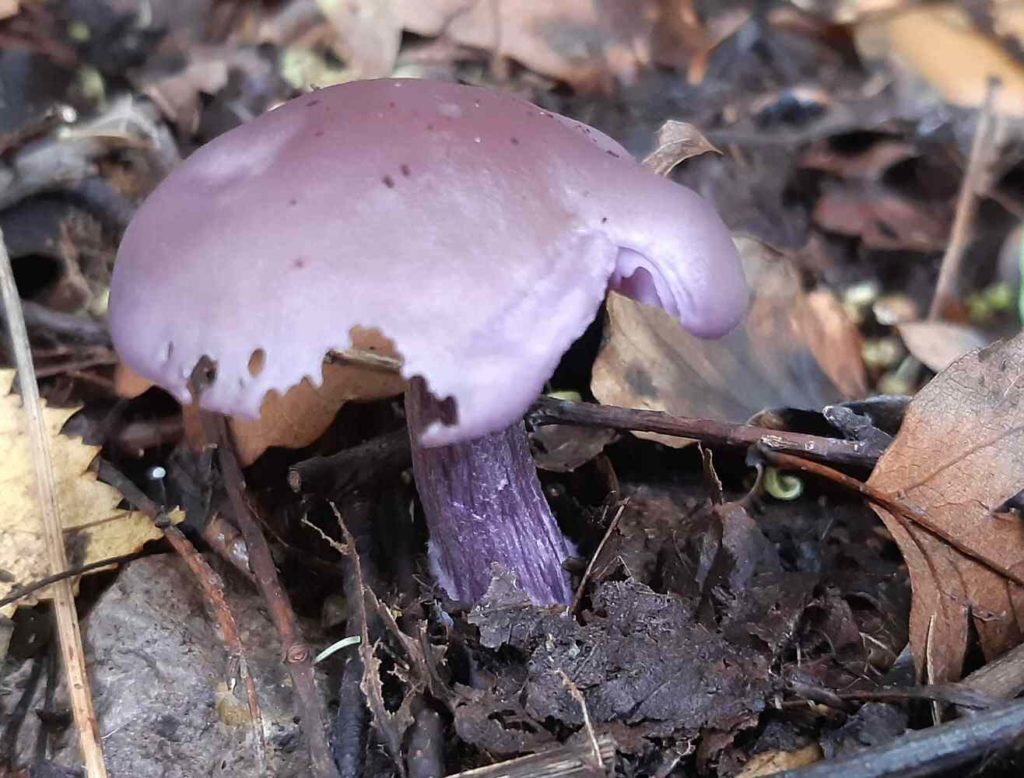






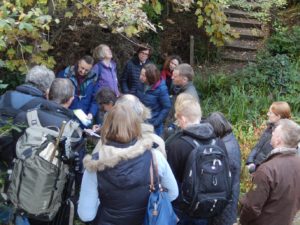
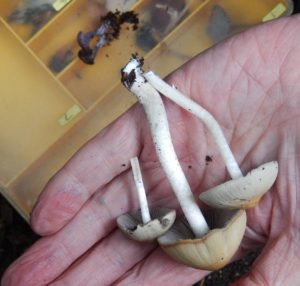
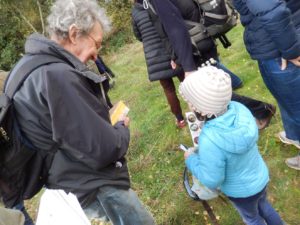
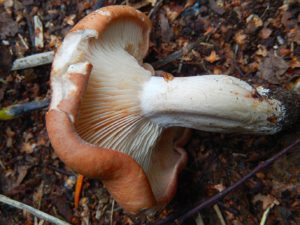
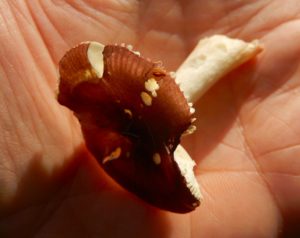
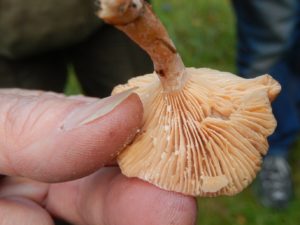
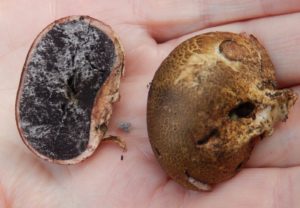


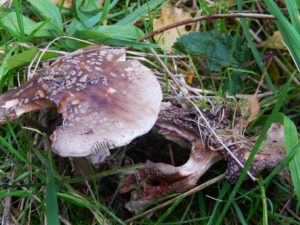
Apart from the fungi named in the image captions, we also saw plenty of the Deceiver (Laccaria laccata); Amethyst Deceiver (Laccaria amethystina); assorted species of Fairy Bonnets (Mycena spp.); the Brown Rollrim (Paxillus involutus); Puffballs (Lycoperdon perlatum); and more. There was hardly any Birch Polypore – we often have fine big white brackets of them: just one small nodule, Piptoporus betulinus.
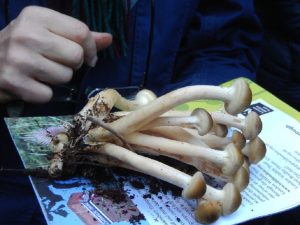
With the rain, mushrooms are suddenly pushing up.
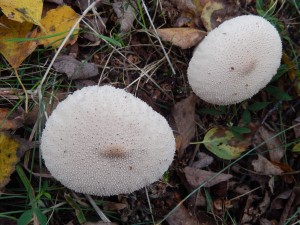
The acid grassland is dotted with large handsome puffballs; under the birches are a lone destroying angel, a small spherically-capped fly agaric, a brown birch bolete, and many smaller fungi including the amethyst deceiver.
The tail end of Hurricane Gonzalo is blowing leaves off the trees; the reserve is quite sheltered, and it is pleasant to work in the passing showers and bursts of sunshine, pulling up ivy and brambles, making space for grassland to regenerate and for new saplings to sprout. But with the mushrooms and the wind, it is at last starting to feel like autumn.